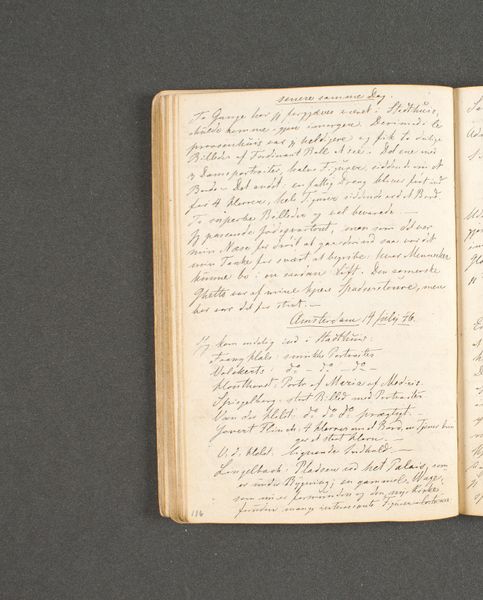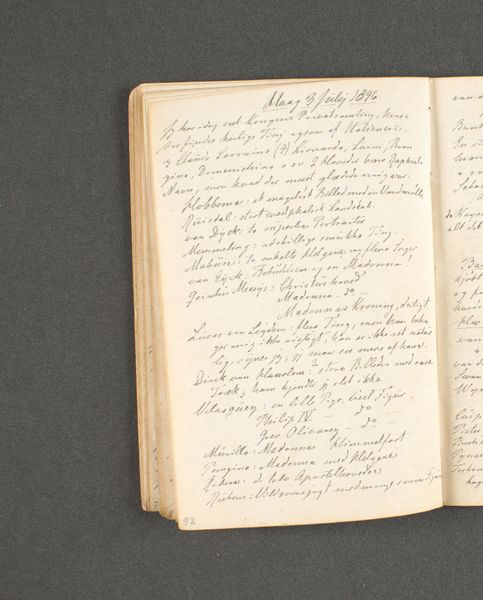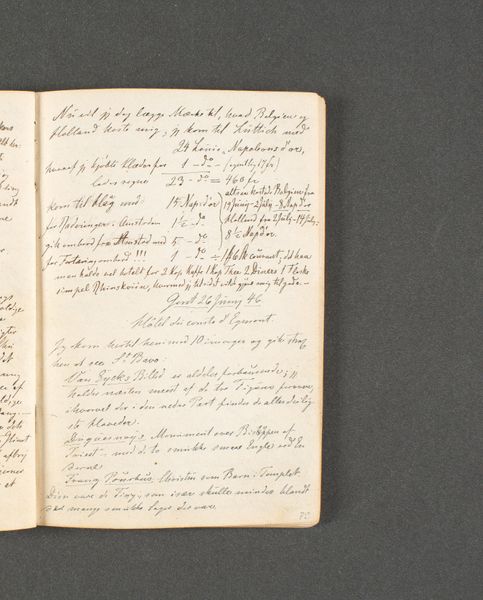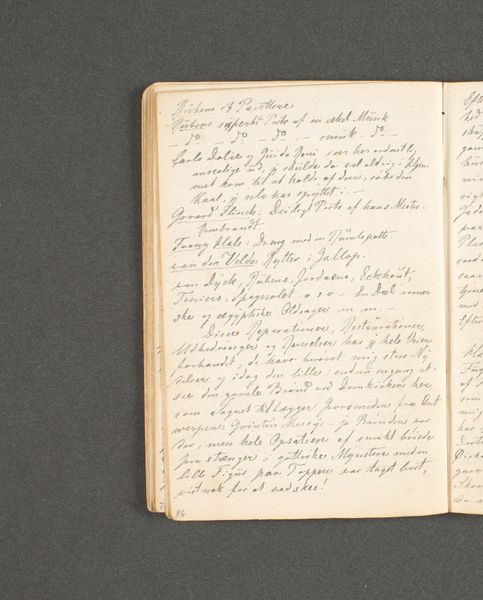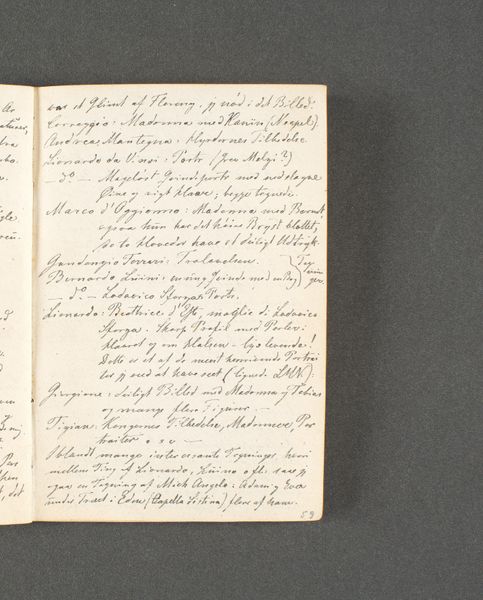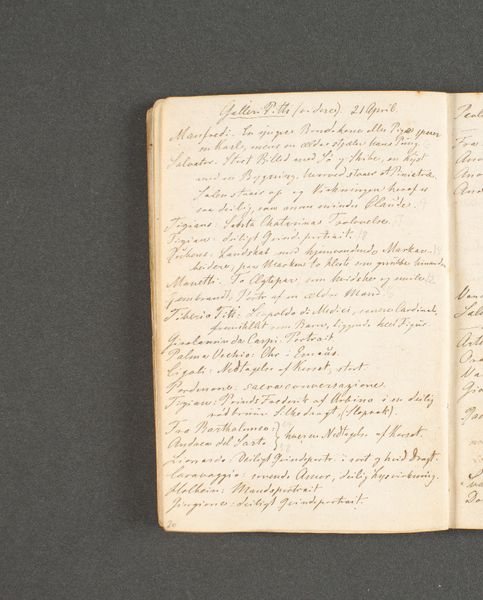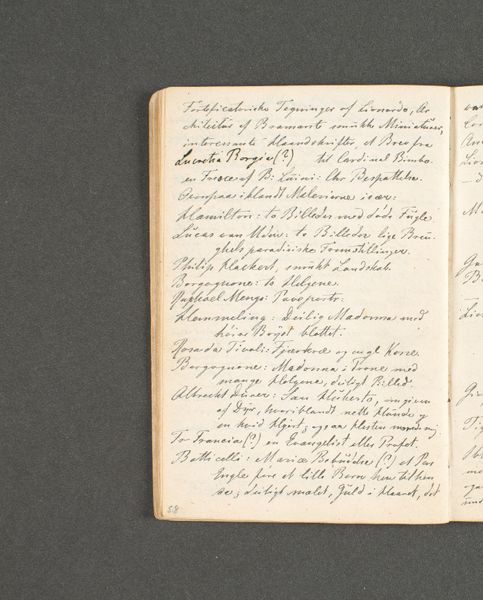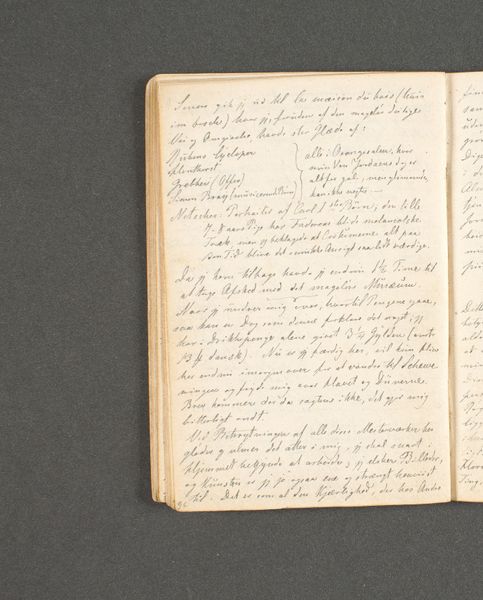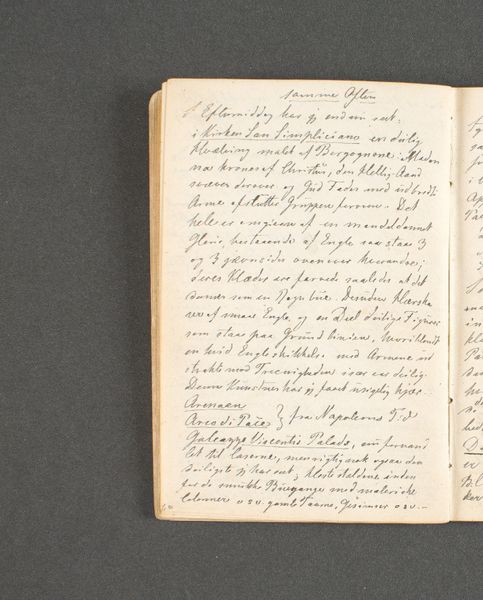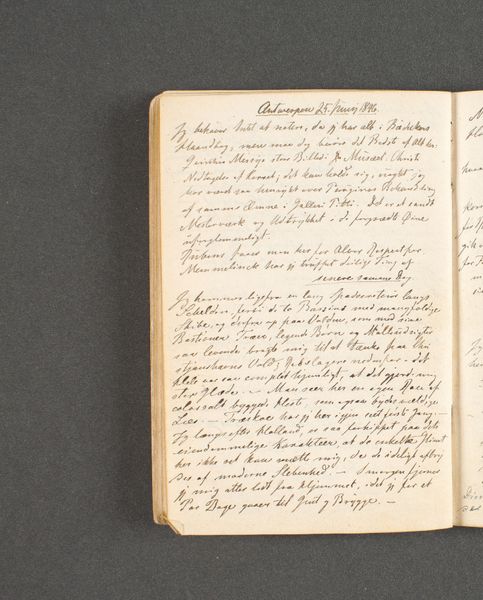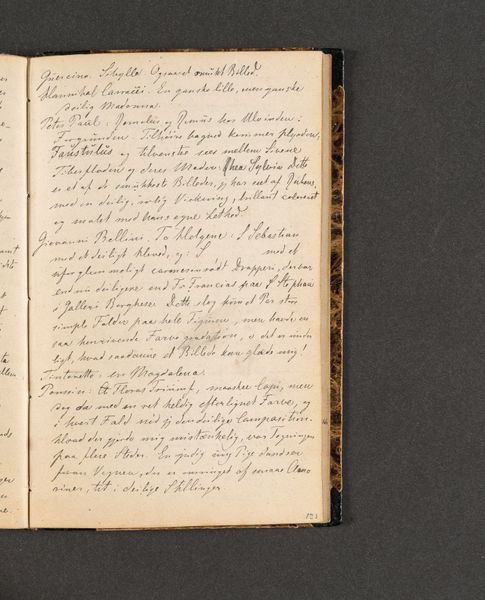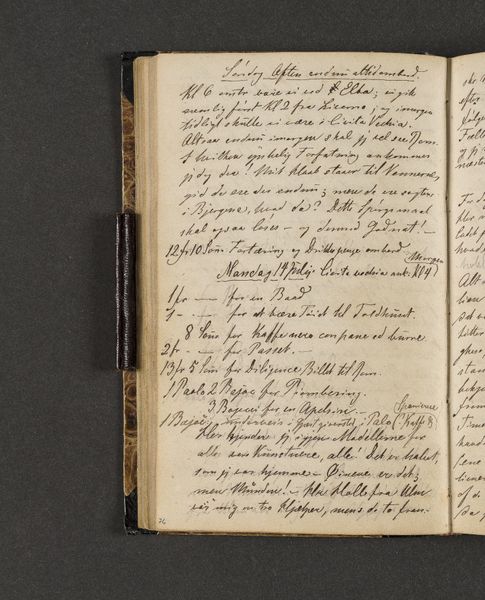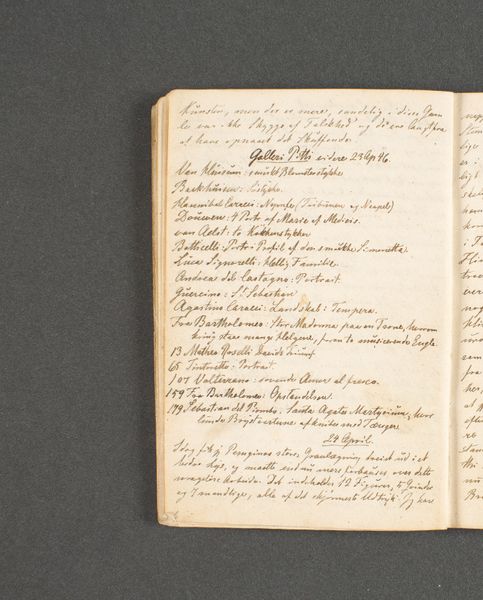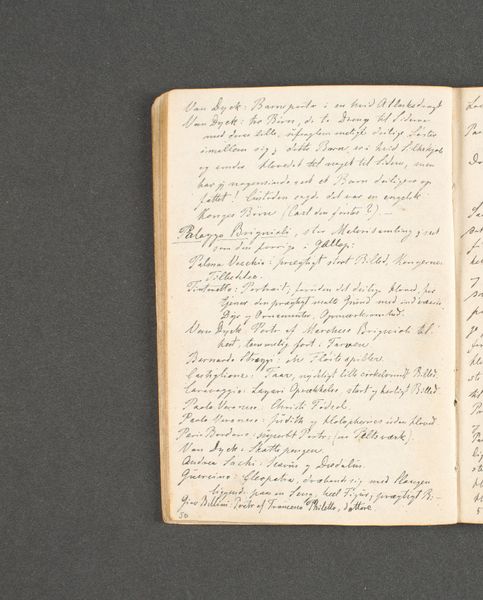
drawing, paper, pencil
#
drawing
#
paperlike
#
sketch book
#
hand drawn type
#
landscape
#
personal journal design
#
paper
#
personal sketchbook
#
journal
#
romanticism
#
pencil
#
sketchbook drawing
#
sketchbook art
#
design on paper
#
small lettering
Dimensions: 131 mm (height) x 89 mm (width) (bladmaal)
Curator: This drawing, titled "Rejsedagbog. Bruxelles," is a page from Johan Thomas Lundbye's travel journal, dating back to 1846. Executed in pencil on paper, it resides in the collection of the SMK, the National Gallery of Denmark. Editor: My initial impression is of something deeply personal, almost secretive. The close, cramped script feels intimate, like eavesdropping on someone's private thoughts. It contrasts the artist’s other, more expansive landscapes. Curator: Precisely. Lundbye's journals offer insight into his artistic process. These weren’t intended for public consumption. They showcase his rapid note-taking, observations, and reflections during his travels, documenting encounters with places and other art. Think of it as a raw archive. Editor: Right, you see here how art production and its reception often become quite public affairs but looking into a sketchbook you confront the initial seeds of the artists ideas - their worries, their reference points, their first impressions on a new location or encounter. Who knew then how the world would receive this artifact now. Curator: And there is definitely a socio-cultural aspect to this work in its record of everyday observations of a particular social milieu through Lundbye's eyes. He captures slices of life, unfiltered, and quickly documents cultural habits he sees during his journey to Brussels, leaving an unpolished impression to reflect upon later on. Editor: Absolutely, and from an intersectional perspective, we could delve into how Lundbye's experiences as a privileged male artist shaped his gaze and documentation, recognizing the limitations and biases inherent in his observations, or wonder about what got excluded from these private impressions. Curator: I'd agree—that critical awareness adds necessary context. What seemed trivial then—ordering coffee at a cafe perhaps becomes a data point, now a telling detail, ripe for contemporary analysis. Editor: Exactly! A potent reminder of how art archives intersect with politics of identity, especially when looking at landscapes. Curator: Overall, revisiting his journal reveals an intimate facet of the artist, offering a refreshing counterpart to his commissioned pieces. Editor: A lovely example of how the past converses with our present understandings, even across artistic intentions.
Comments
No comments
Be the first to comment and join the conversation on the ultimate creative platform.
